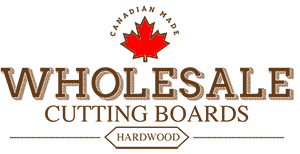Blog
Cutting Boards and Food Safety
If you cook, you dread bad news about food-borne illnesses and contaminated food. The good news is that bacteria and other toxins in the kitchen can be controlled.
According to researchers at the North Carolina State University, pathogens can attach themselves to fruits, vegetables and meat. Bacteria on one is easily transferred to another when you use the same cutting board. For example, toxins on a turkey breast can be passed to an apple when you use the same board to slice both.
According to their studies, you can reduce the chances of unsafe food by paying attention to three common sense rules for cutting boards.
#1. Choose the Right Board
Plastic is a poor choice for cutting boards in your kitchen, according to research into cutting boards and food safety done in the 1980s. The result of the studies showed that when you run the knife over the food, he edge leave tiny slices in the board. These grooves are natural gathering spots for bacteria. Even if you run the board through the dishwasher, toxins still hang on.
On the other hand, wood doesn’t develop as many nicks and cuts because it is harder. And hardwoods, like maple, cherry and walnut, are best because they have properties that naturally stop the growth of bacteria. Because they have a fine-grained texture, fluid is pulled into the grain, capturing the toxins. Washing and air drying the board then eliminates the trapped bacteria.
#2. Clean Your Cutting Board
In the past, butchers always put a layer of salt over their cutting tables to get rid of the bad smell. What they were actually doing was stopping the growth of bacteria, which is what caused the odor. The salt drew out the moisture in the wood, killing the toxins.
Better cleaners are now available to the home cook. Experts in food safety suggest that you spray your wood board with a mix of antibacterial soap and water. Then be sure to air dry it. To make that easy, many wood cutting boards have handles on one end so you can hang them up, out of the way, while they dry. Air drying is important because bacteria thrive in moisture. By thoroughly drying the board between uses, it has a chance to get rid of toxins completely. When the board stays damp, bacteria can continue to grow.
Don’t forget to clean your sponge too. When you wipe down the cutting board after cutting up chicken or tomatoes, it picks up the juices. This can be a source of cross-contamination if you then use it to clean the counter or table. One of the most efficient and easiest ways to clean sponges is to run them through the dishwasher.
#3. Replace Your Cutting Board
If your cutting board has too many grooves, it is time to replace it for safety sake. These gulleys are where toxins collect and grow, causing food-born illnesses and cross-contamination. Plastic develops a network of grooves quite quickly. But with a hardwood cutting board, it can take decades.
If you see a large number of grooves in your wood board, switch it out for a new one. The old one can be repurposed in the craf
t room or the workroom of a do-it-yourselfer.
High Quality Wholesale Cutting Boards
When you buy from Wholesale Cutting Boards, you are assured of genuine Canadian-made boards, in cherry, walnut or maple hardwoods. Made to the highest standards using sustainable materials, they are available in wholesale lots of 50.
When you buy wholesale, you enjoy the lowest possible prices for superior boards. They make excellent corporate gifts, door prizes, employee recognition awards, customer rewards and wedding favors. Buying in quantity means you won’t run out.
The boards are available in a wide range of sizes, shapes and designs. If you need a small cutting board, a charcuterie boards or large cutting boards, we have them. And if you need a special design, our experts can help you create the perfect board for your needs. Call or email Wholesale Cutting Boards if you have questions. We are here to help.

